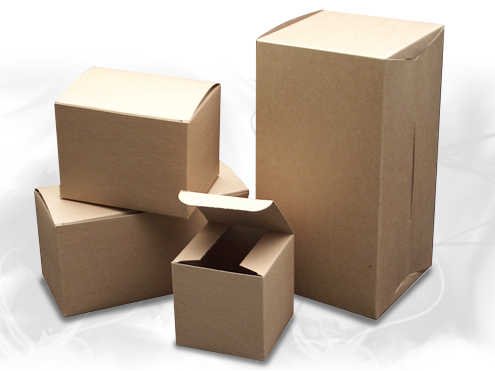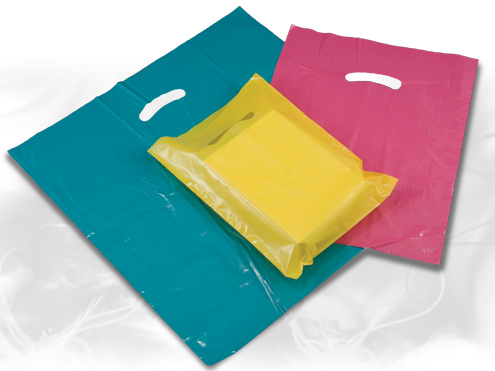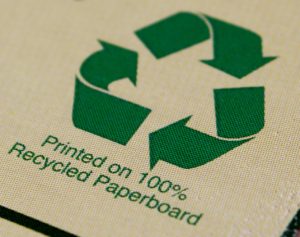By Splash Packaging TeamPackaging Resources, Paper Bags, Sustainability in the Packaging Industry
What Happens To Packaging When You Recycle It?
The idea of recycling is promoted and advertised constantly, but do you ever wonder what happens to your recycled items after they reach the bin? Recycling is widely regarded as a positive action, and is highly supported in the packaging industry, but many people don’t know how recycling actually works. There are different processes in place to recycle various materials as efficiently as possible. It’s important for packaging suppliers and buyers to know how the recycling process works so they can make the best informed decisions when it comes to eco-friendly packaging options.  Recycling comes down to a few basic steps. First, the recycled products are actually recycled, either by the end user or as excess materials from manufacturing. Then the products and materials are collected and sorted to the proper recycling facilities. Then the products are converted into usable materials using various methods and can then be used to make new products. Recycled materials can be used alone, or mixed with other materials to create a new product or material. The final step, which completes the recycling life cycle, is consumers buying recycled products and using them (2). The processes of recycling vary in different locations or facilities, but the basic premise and outcome are still the same.
Recycling comes down to a few basic steps. First, the recycled products are actually recycled, either by the end user or as excess materials from manufacturing. Then the products and materials are collected and sorted to the proper recycling facilities. Then the products are converted into usable materials using various methods and can then be used to make new products. Recycled materials can be used alone, or mixed with other materials to create a new product or material. The final step, which completes the recycling life cycle, is consumers buying recycled products and using them (2). The processes of recycling vary in different locations or facilities, but the basic premise and outcome are still the same.
A retailer’s largest contribution to the recycling process is to source packaging products that are made with recycled materials. That doesn’t mean that you have to use exclusively recycled packaging, but it helps to use as much as possible. Encouraging consumers to recycle is always an important aspect of this process, as they are the largest contributors to post-consumer waste. Businesses and manufacturers can also recycle their post-industrial waste, as it can be easily converted into new products. Buying products made with recycled materials is the best way to maintain eco-friendly packaging, and making sure the packaging is recyclable and/or reusable is the next step.
Paper Recycling
Paper is made from small plant fibers, so it is generally easy to recycle. There are limits to how many times the fibers can be recycled before they are no longer functional or optimal. The best types of paper products to recycle are newsprint, plain paper, and cardboard. These materials can be more efficiently recycled into new materials and products without too much intervention. Many paper products also come with non-recyclable materials that need to be removed before they can be recycled properly. Paper products with lamination or coatings, handles, plastics, or other additional materials are harder to recycle because all foreign materials must be removed or screened out during the recycling process. Some packaging products like shipping containers, paper bags, paper boxes, and other paper items are 100% recyclable and should always be recycled properly to prevent waste. Some products like eurototes or jewelry boxes are more difficult to recycle, which should always be considered when purchasing retail packaging. The good news is that most products at Splash Packaging are made with recycled content, so even if they aren’t fully recyclable you are still doing your part to support the recycling life cycle.
Here’s a general step-by-step description of how paper products are recycled:
- Paper arrives at a recycling center after being collected from recycling bins.
- The paper is sorted and then transported to other facilities for pulping.
- The paper is soaked and heated in large vats, which turns it into a pulp material called slurry, which is about 90% water. During this step, chemicals are used to separate the ink from paper.
- The slurry is then screened several times to remove glue, debris, and ink, and contaminants are sent to the landfill.
- The pulp is then refined and beaten to the consistency needed to create new paper, including bleaching or whitening.
- A machine forms sheets by placing the pulp onto a flat moving screen, the sheets are then rolled and dried to form new paper.
Sources: (1)(4)
Plastic Recycling
Plastic is an extremely versatile material, and can be recycled effectively with the right organization and machinery. Plastic items must be sorted into groups based on the type of resins used (3). Recycling plastic can be a little more complicated than paper because of the wide variety of plastic materials used in consumer products. Most cities have designated places to recycle plastics so that they can be sorted and recycled efficiently. Sorting of recycled plastic items is the most complicated part of the process, and once products are recycled into the proper groups they can then be recycled and made into new products.
Here’s a general step-by-step description of how plastic products are recycled:
- Plastics are brought to a recycling plant where they are washed and inspected.
- Plastic items that are deemed recyclable are washed and chopped into small flakes.
- Flakes are separated in a flotation tank, and then they are dried and melted into a liquid.
- The plastic liquid is fed through screens for more thorough cleaning.
- The long liquid strands that are fed through the screens are cooled and cut into pellets.
- The pellets are then sent to manufacturing facilities to be used in making new products, like plastic bags or plastic packaging.
Source: (1)
How Effective Is Recycling?
According to the University of Oregon (3):
- Recycling one ton of newspaper saves three tons of wood pulp, 3,000-kilowatt hours of electricity, or 23% of the energy needed to process a ton of newsprint from the new (non-recycled) pulp.
- Recycling one ton of cardboard saves three tons of wood pulp.
- Plastics are largely derived from energy sources like coal, petroleum, and natural gas, so recycling them provides energy savings. Recycling saves 90% of the manufacturing energy needed to produce new plastics.
It’s also worth noting that although recycling materials expends energy and resources, it still prevents these recyclable materials and items from ending up in landfills where they become unusable waste (especially plastics that don’t degrade). Recycling is definitely worth the effort and energy it requires, and there are new materials and methods being discovered all the time to advance efficiency and sustainability. For now, the best ways to contribute are to stay informed, purchase products responsibly, and help educate others about recycling.
(1) http://www.factmonster.com/ipka/A0934633.html
(2) http://www.all-recycling-facts.com/recycling-process.html
(3) http://pages.uoregon.edu/recycle/after_collection.html
(4) http://inspiredeconomist.com/2010/08/12/what-happens-to-all-that-recycled-paper-anyway/
See how Splash Packaging can elevate your brand with exceptional quality & style.
Newsletter sign up
Recent Posts
- How to Package Baked Goods to Maximize Freshness & Presentation
- The Best Ways to Package Homemade Jams & Jellies for Gifts or Sale
- The Best Paper Shopping Bag for Takeout: Why Restaurants Choose the EcoPlus™ 10 x 10 x 10 Takeout Bag
- E-Commerce Trends for 2025: What Online Retailers Need to Know
- Paper vs. Plastic Bags: Which Is the Best Choice for Your Business?









